The Glashütte Original SeaQ 39.5mm, Now in Blue
GO's cool steel diver's watch, in a new and fresh attire.
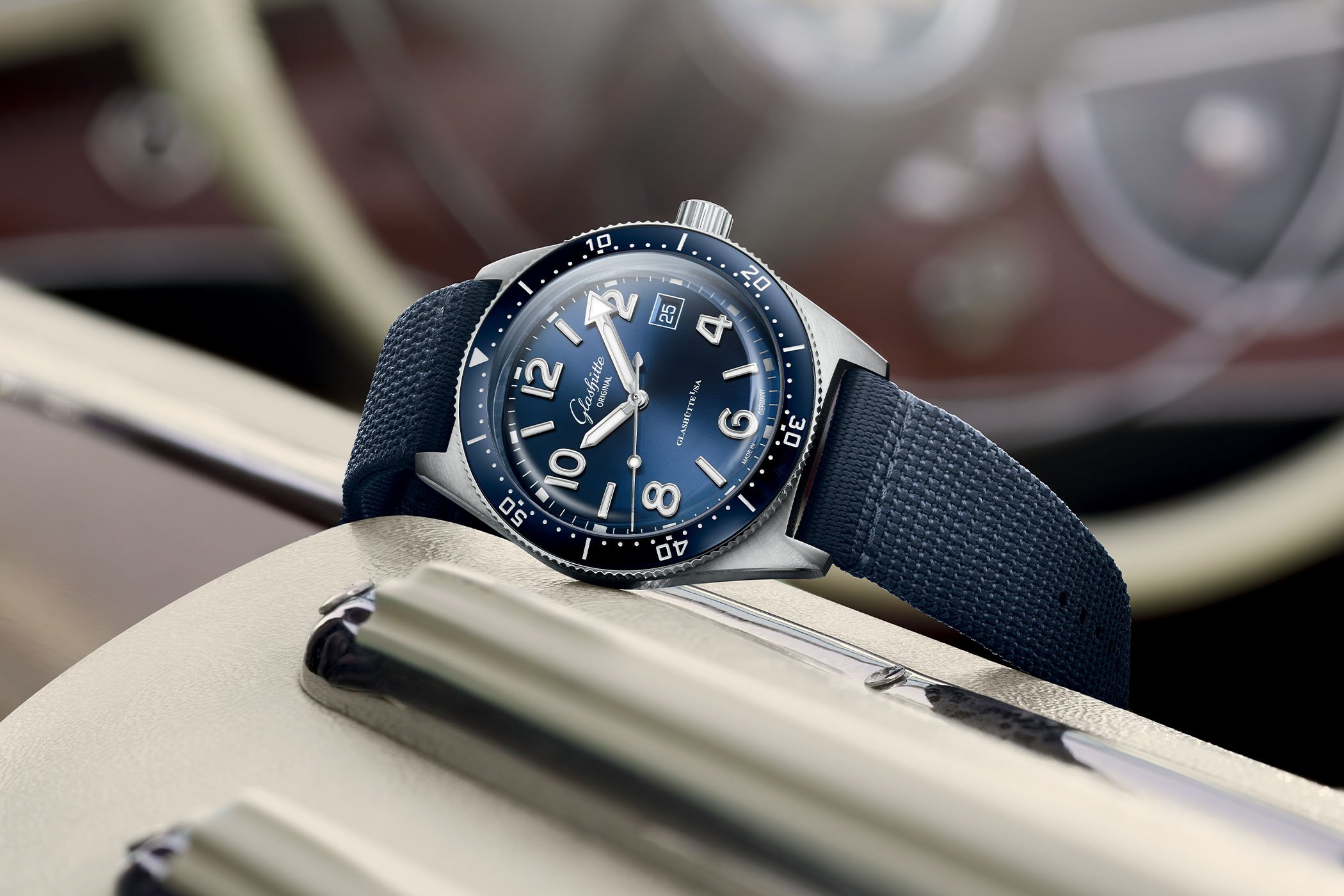
Presented last year, the Glashütte Original SeaQ is the first watch of a collection focussed on instrument watches – the “Spezialist” collection. Available in two different sizes and with modern or vintage-inspired style, it has since been well received by the watch community. Following the two-tone and full gold Panorama Date models earlier this year, GO continues to expand its range with a new SeaQ 39.5mm with blue dial – and it is quite different from the existing black version.
While the SeaQ Panorama Date is a modernly sized (43mm) and designed watch, the original 39.5mm SeaQ was a clear tribute to the watch that inspired this diver’s collection, a watch launched by GUB in 1969 under the name Spezimatic Type RP TS 200. With its black dial and bezel, combined to large painted applied indexes in “old radium” colour, it plays on vintage vibes, specifically with its contained diameter of 39.5mm and its overall robust construction.
This year, the brand adds a blue version to the SeaQ 39.5mm collection – and there’s more than just a different dial colour to differentiate this model. With this new edition, Glashütte Original relies on the same design as used in the blue Panorama Date model, with a blue sunray-brushed dial and a blue ceramic insert on the bezel – still with the 60-minute diving scale with complete graduation. Also, another difference with the black version of the SeaQ 39.5mm, these new blue models now feature applied Arabic numerals and hour markers with white Super-LumiNova. This gives the watch a more modern and fresher look.
The hands and numerals retain their oversized and original design, ensuring great contrast with the blue background and optimal legibility at night. The date window is retained too, yet the disc is now matching the dial’s colour.
As with the black edition of the SeaQ 39.5mm, Glashütte Original offers a large choice of straps and buckles. This new blue edition can be worn on a 3-link brushed and polished steel bracelet with folding clasp and fine adjustment diver extension system. Also, you can choose for a blue nylon strap or a black rubber strap – each of them available either with a pin buckle or a fold fastener.
Technically-speaking, no evolution as the watch retains its domed sapphire crystal, its screw-down crown and 200m water-resistance. It still complies with ISO 6425 and DIN 8306 diver’s watch standards. Under the screwed steel caseback is the in-house, calibre 39-11. An automatic movement with a 40-hour power reserve and 4Hz frequency, it displays the hours, minutes, seconds (with hacking seconds for precise setting) and a date mechanism. Despite the fact that it is hidden, calibre 39-11 is beautifully finished with bevelled edges, Glashütte stripe finishes, a swan-neck fine adjustment (not engraved) and a skeletonised rotor.
Price and availability
The Glashütte Original SeaQ 39.5mm Blue Dial/Bezel will be available from all Glashütte Original Boutiques and selected retailers as of September 2020. Prices will start from EUR 8,580 (with rubber or nylon strap with pin buckle).
More information at glashuette-original.com.

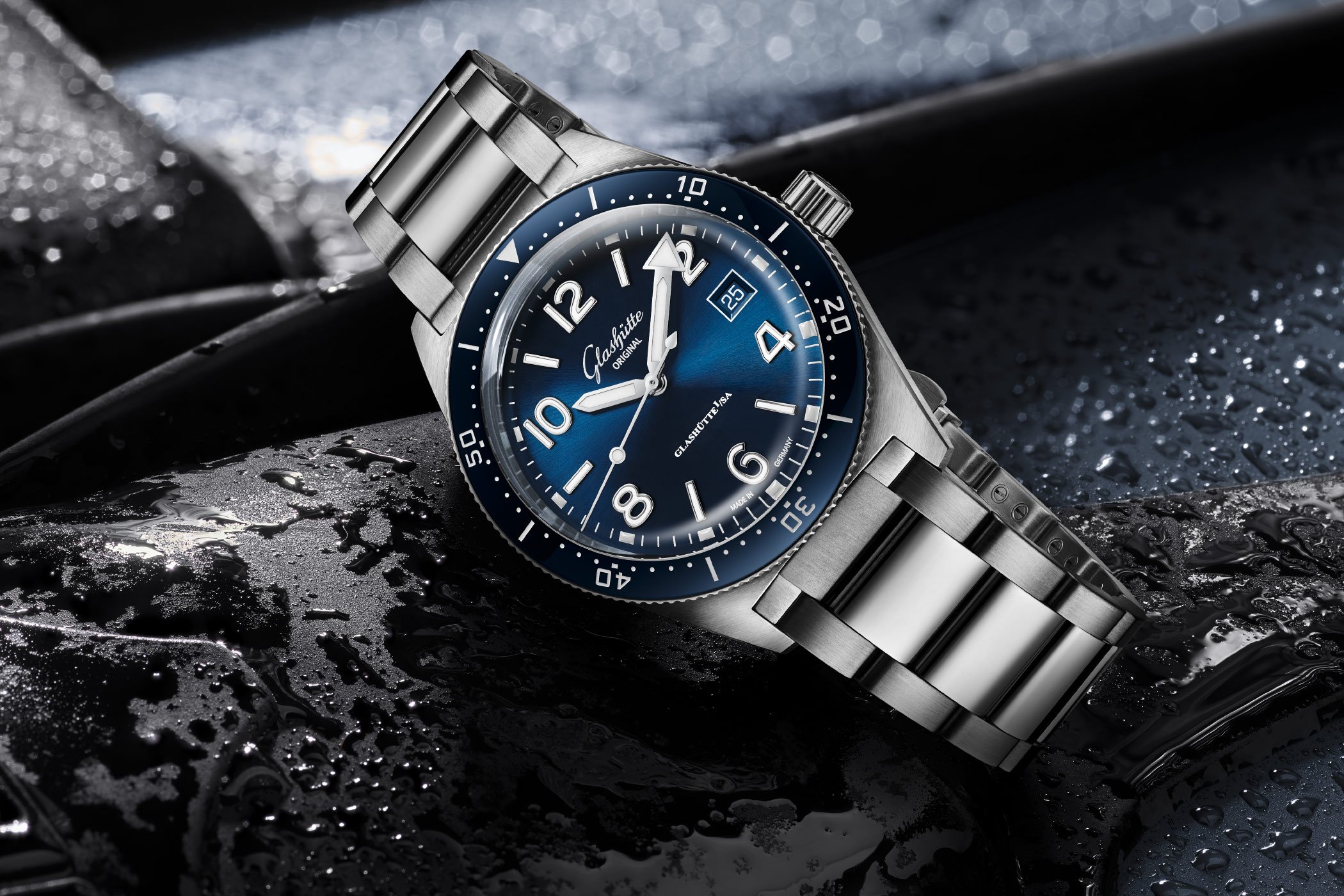
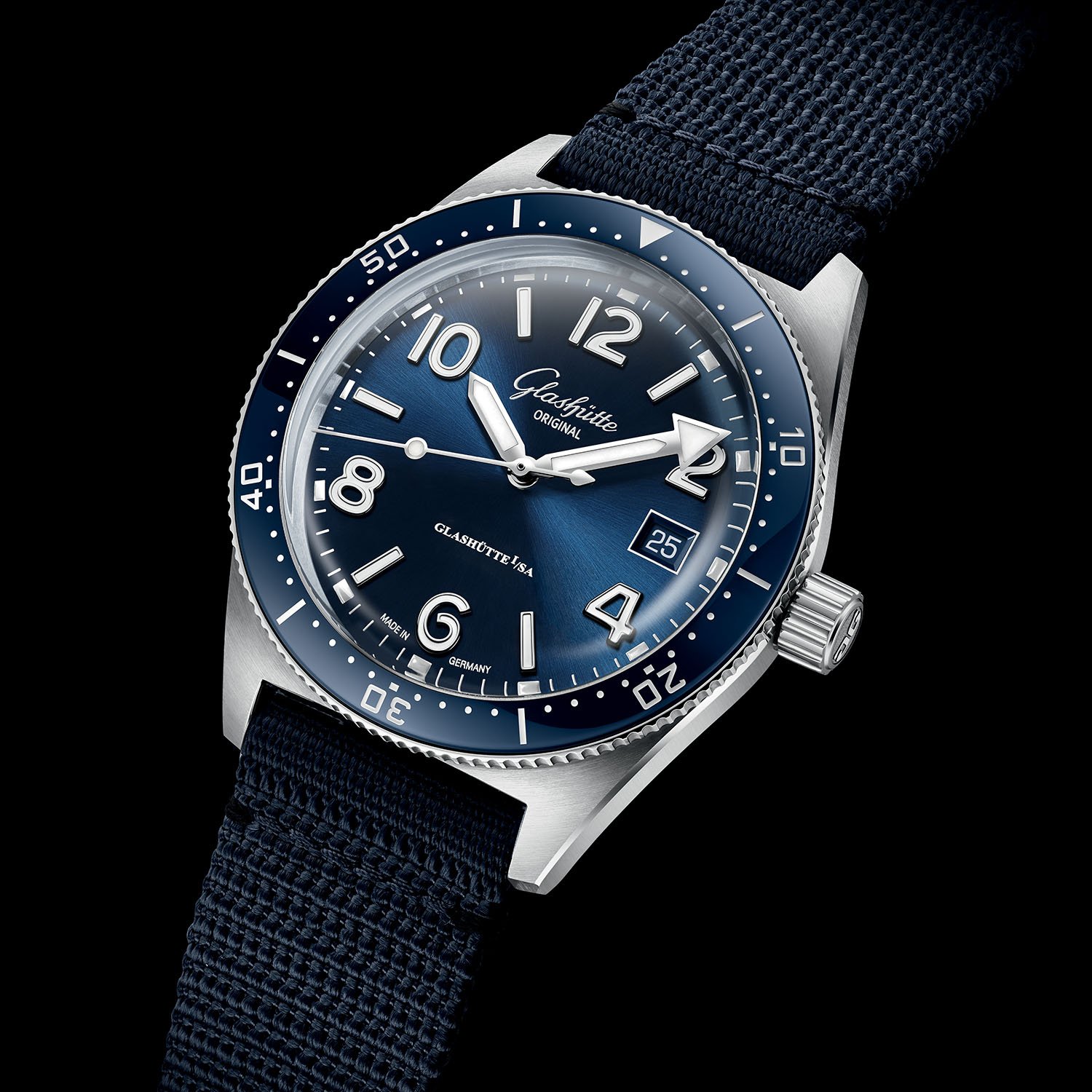
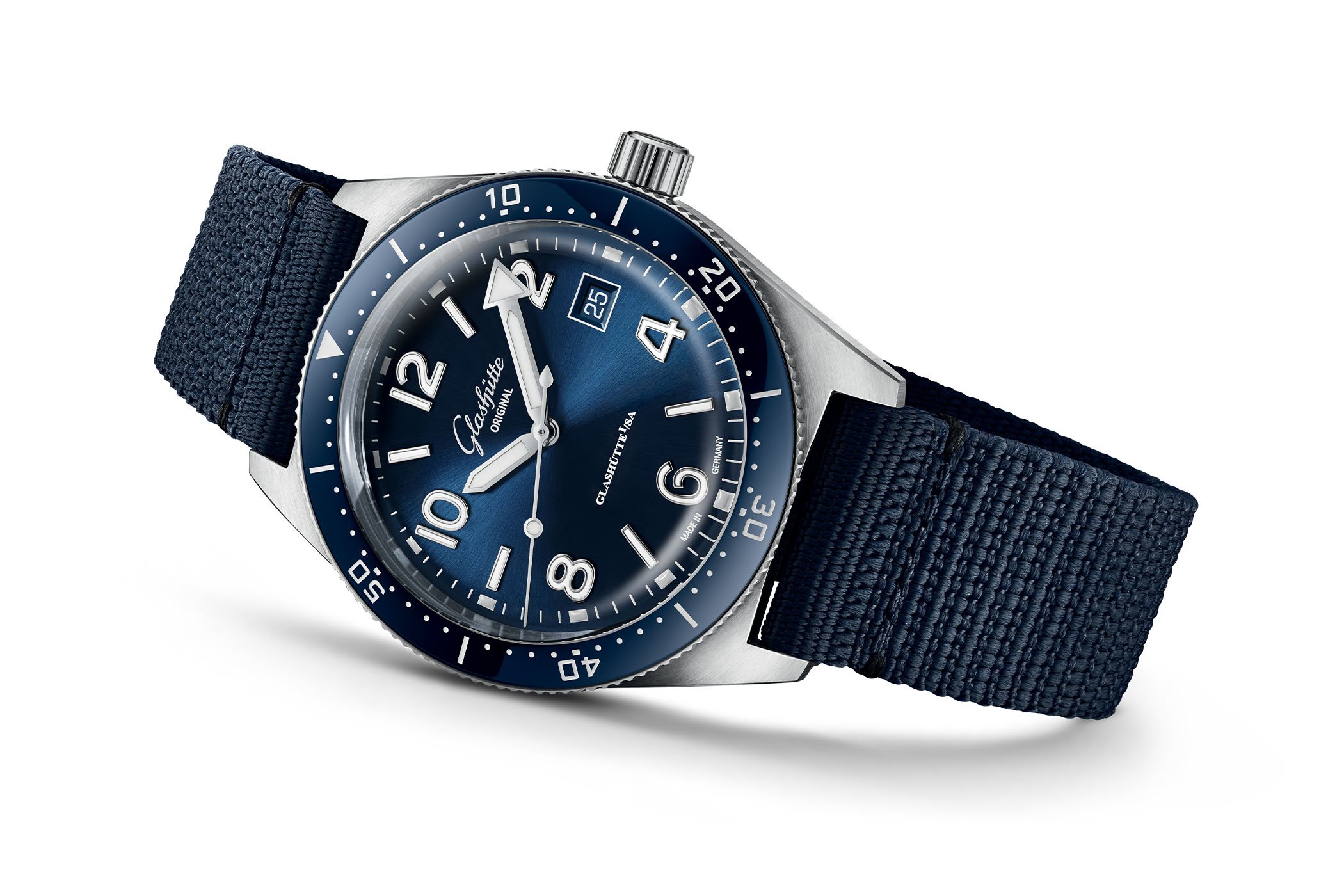
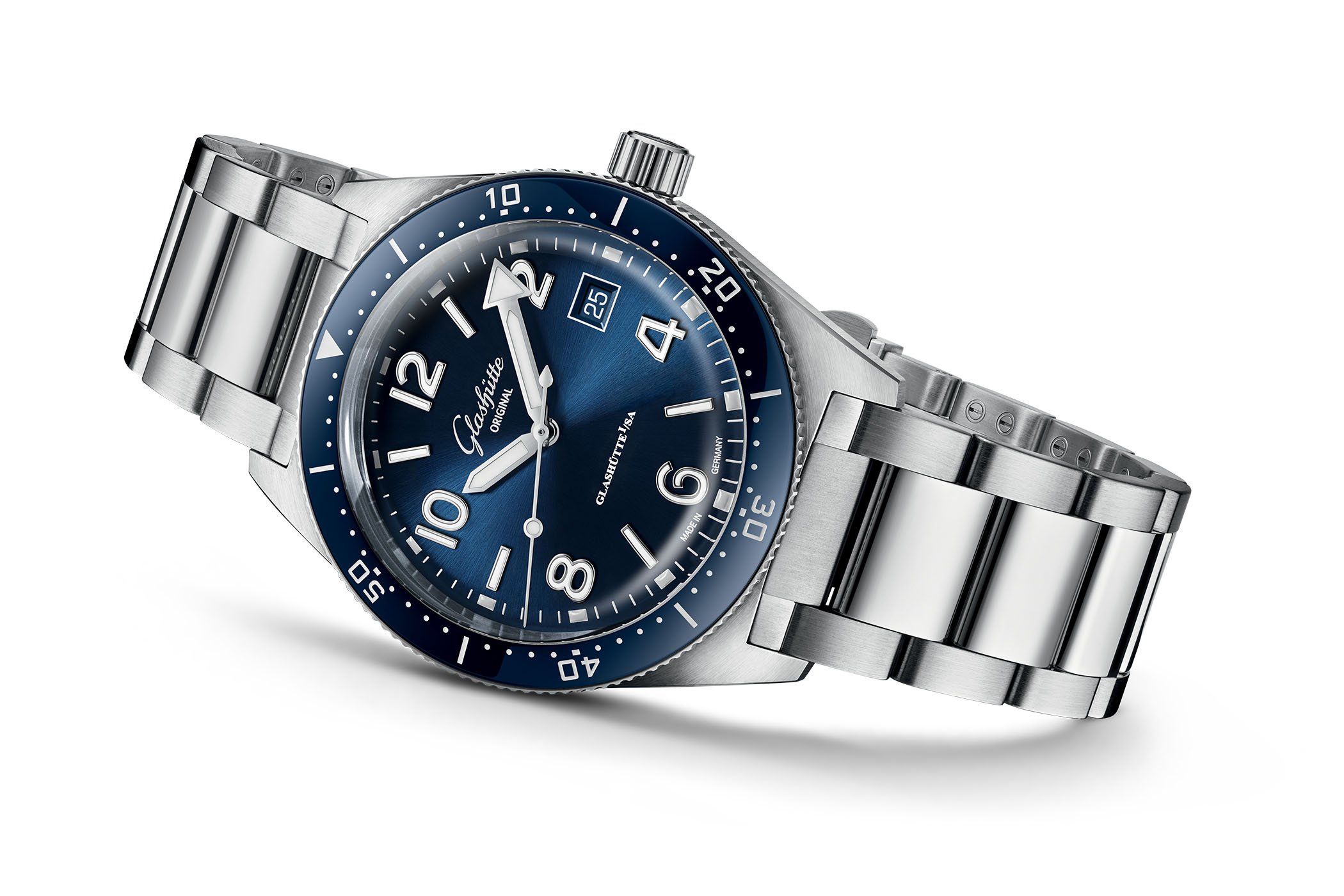
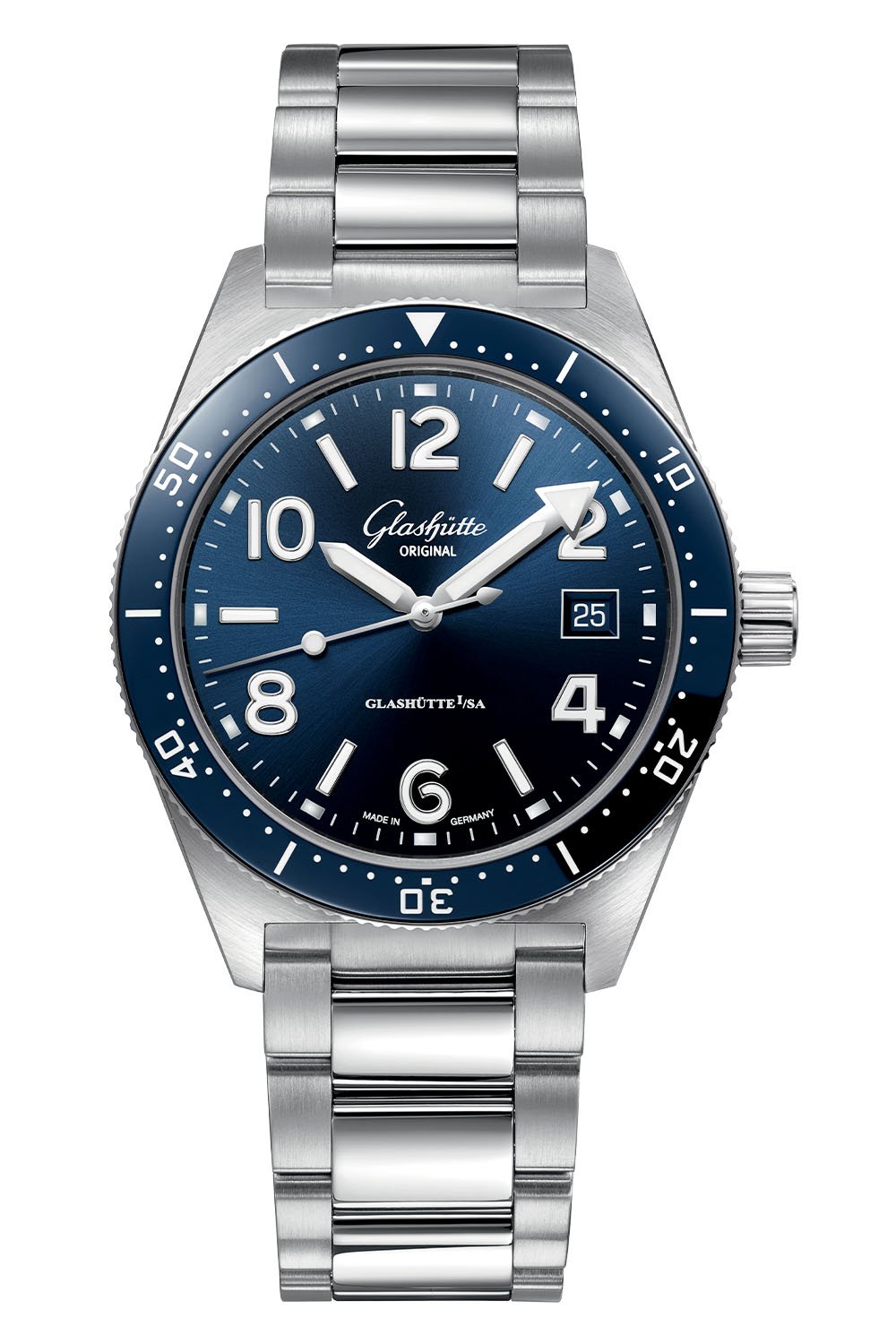
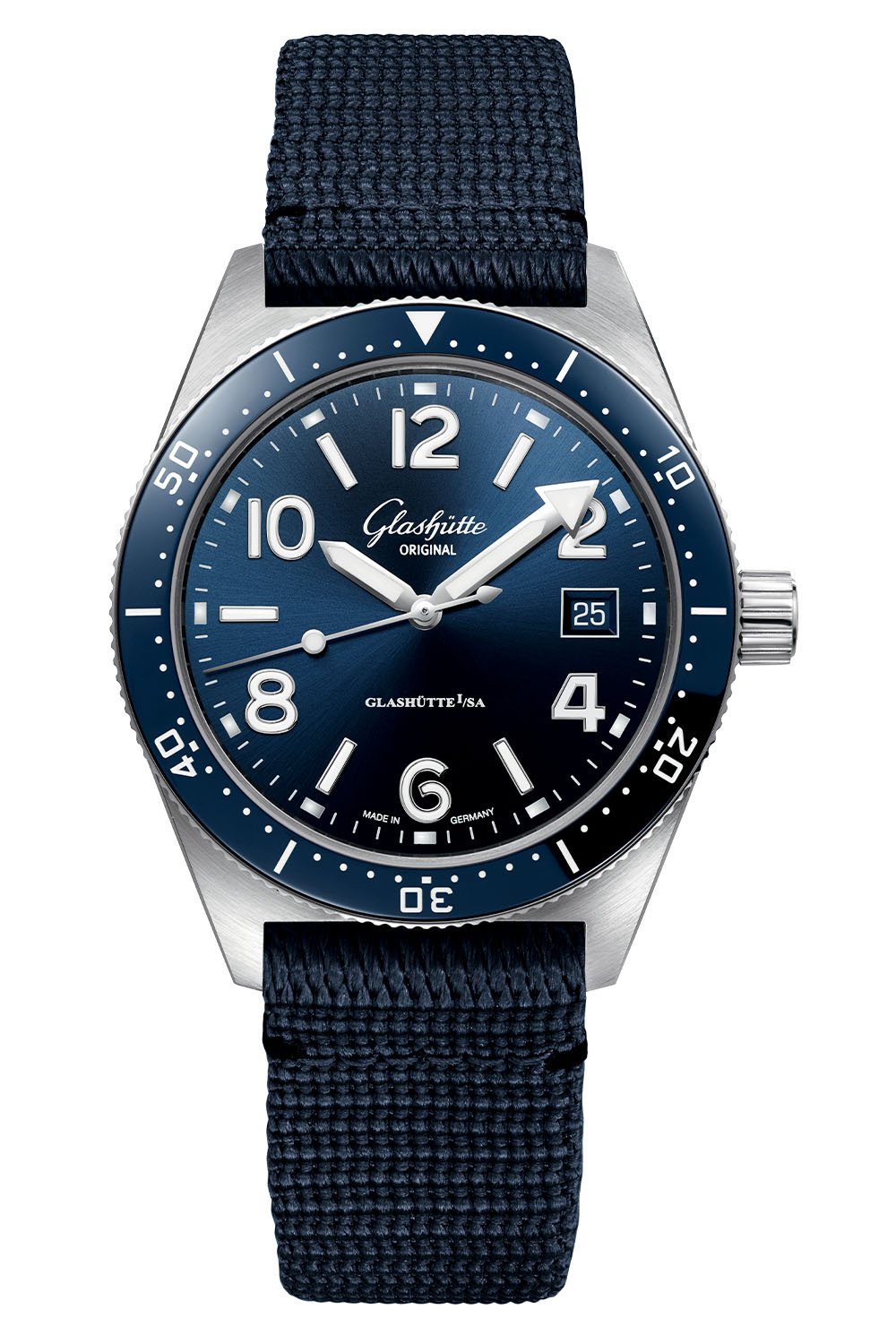
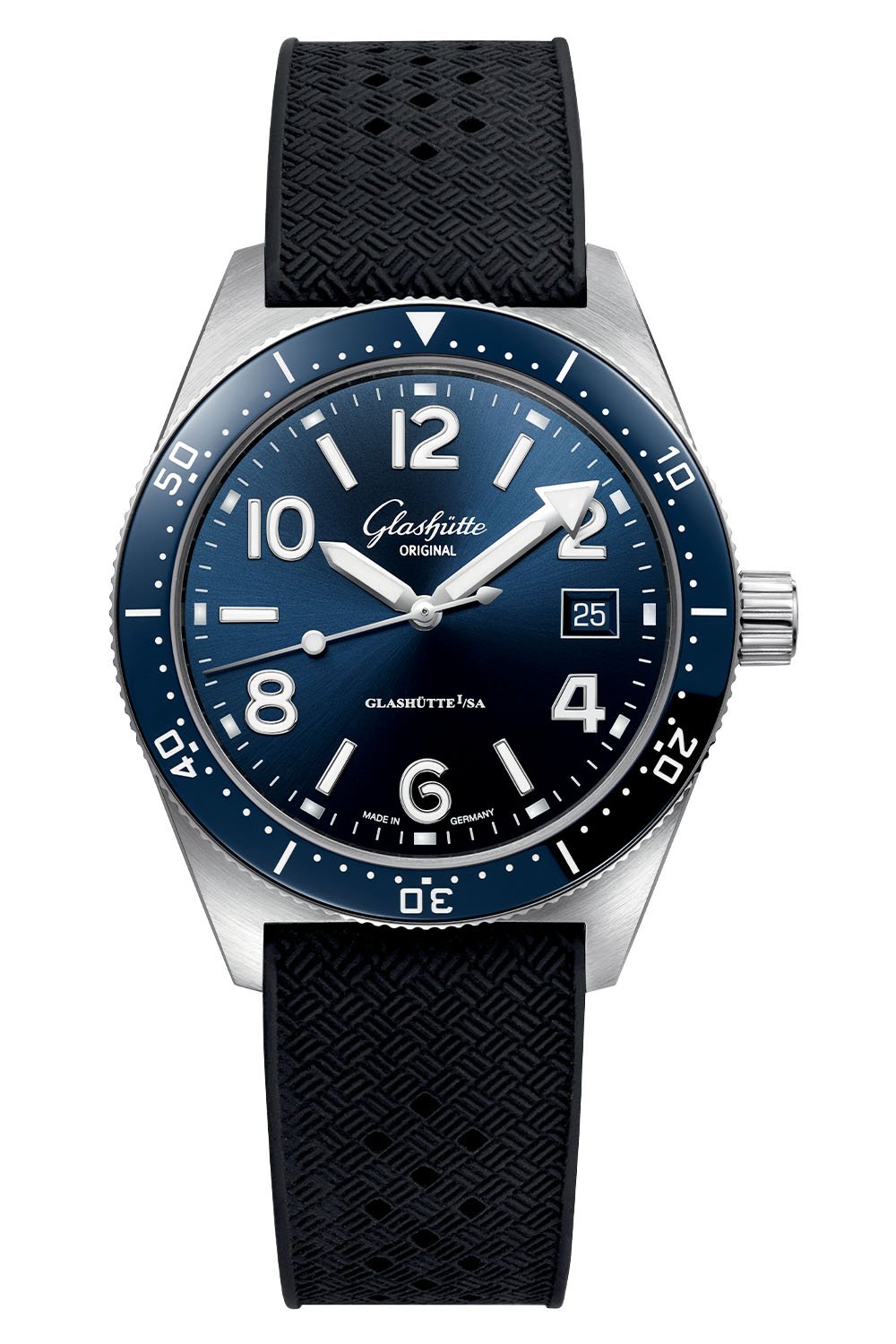
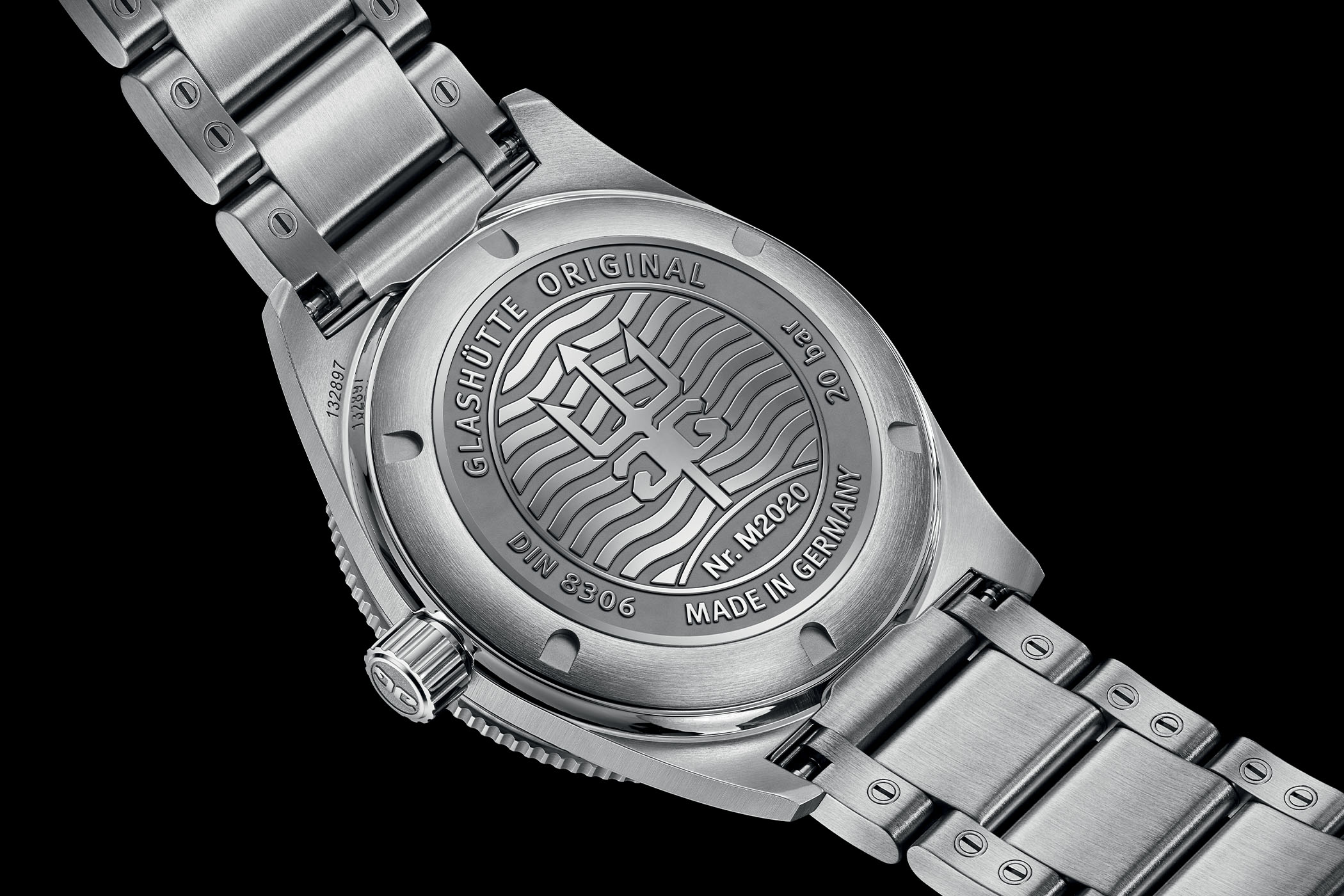



4 responses
I much prefer this iteration with the blue dial and white superluminova to the original black-dialled version with faux-aged lume. Pricing seems to be in line with where they usually pitch their offerings. But I’m guessing that after the initial launch these might be offered at below list, with some hard bargaining at the AD.
I like it a lot
The watch is a good looking piece for sure, but why the price is so high could use a detailed explanation.
I celebarte the addition of applied markers on the new version of the 39.5mm but left wondering why the 2nd picture has printed numerals .. an earlier itertion perhaps?